Ecology & Zoology

One of the concerns about the switch from incandescent to fluorescent lighting was that while the ballasts are higher frequency now - humans do not have to hear that annoying hum - they were right in the range that pets still hear.
Those are still low volume. Some pet owners say high-pitched noises are a problem, but when the charity International Cat Care asked veterinary neurologists for information regarding cats having seizures in response to high-pitched sounds, the answer was that the problem was not documented.
So Mark Lowrie and Laurent Garosi from Davies Veterinary Specialists…

Researchers have shown that, like humans, mustached bats use the left and right sides of their brains to process different aspects of sounds.
No other animal, not even monkeys or apes, has proved to use such hemispheric specialization for sound processing - meaning that the left brain is better at processing fast sounds, and the right processing slow ones.
"These findings upset the notion that only humans use different sides of their brains to distinguish different aspects of sound," says the study's senior author, Stuart Washington, PhD, a neuroscientist at Georgetown.
Washington…
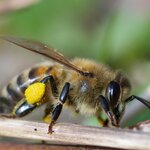
Genetic variation is important in a healthy population and recombination, or crossing-over, which occurs when sperm and egg cells are formed and segments of each chromosome pair are interchanged, is a vital part of maintaining genetic variation.
Honeybees take it to a whole other level and a new study finds that the extreme recombination rates found in this species - 20X higher than humans, higher than measured in any other animal - seem to be crucial for their survival.
Like other social insects, honeybees live in colonies consisting mainly of closely related members of the…
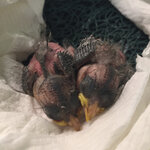
The first three eggs of the rare ‘Akeke‘e have hatched under the auspices of San Diego Zoo Global conservation biologists. The newly hatched chicks represent hope for the survival of a small Hawaiian honeycreeper.
Eggs from two species of rare Hawaiian honeycreeper birds, the ‘Akikiki and ‘Akeke‘e, were collected from native habitat earlier this month as part of an effort to preserve these two bird species from extinction.
The eggs were brought into managed care to start a breeding population through a collaborative effort by the Kaua‘i Forest Bird Recovery Project (KFBRP), State of Hawai‘i…
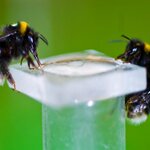
Researchers gave bumblebees the option to choose between a sugar solution with nicotine in it and one without and found that bees infected with the Crithidia bombi parasite were more likely to go for the nicotine-laced nectar than those that weren't infected.
Bees are not the only species known to use nicotine to fight parasites, with house sparrows using cigarette butts in their nests to ward off mites.
Infected bumblebees that consumed nicotine delayed the progress of the infection for a few days, showing lower levels of parasites than those that had not.
There have been some…
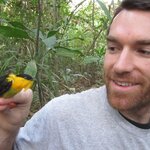
A new study of animal behavior suggests that evolution is hard at work when it comes to the acrobatic courtship dances of male golden-collared manakins, a tropical bird species.
There are about 60 different species of manakins, most of which perform, to some degree, a physically complex display behavior to both court females and to compete with other males. The new study says
the ability to detect testosterone in the body regulates the acrobatic courtship and competitive behavior - bird brawn.
The researchers hypothesized that evolution acts to help shape the mating display…

Looking after yourself, and trying not to infect others, is a good strategy to prevent disease from spreading - not only if you are a considerate co-worker, but also if you are an ant, meerkat or other social animal, as revealed by an epidemiological model developed by the groups of Professor Fabian Theis from the Helmholtz Center Munich and Professor Sylvia Cremer from the Institute of Science and Technology (IST) Austria.
In a Theme Issue of the Philosophical Transactions of the Royal Society B on "The Society-Health-Fitness Nexus" published on 13 April 2015, they combine observations of…

By identifying and comparing the sequences of more than 400 receptors in the genomes of two fruit flies and three mosquito species, entomologists have unlocked one of the hormonal mechanisms that allow mosquitoes to produce eggs. They identified a single gene for a receptor with an unknown function within the species distribution.
The model for this research is the yellow fever mosquito, Aedes aegypti. Females have to consume a blood meal before they are able to produce a batch of eggs. The blood meal triggers the mosquito's brain to release two hormones, an insulin-like peptide…

A common, humble field bug is spreading a disease that has already infected millions of olive trees in Italy.
Olive and citrus fruit crops throughout the Mediterranean are threatened, yet there has been a collective failure to recognize the danger and take decisive action.
In Puglia in southeastern Italy, 241,000 hectares of olive groves have been restricted, with at least 10% of the 11m olive trees in the worst-affected region, Lecce, infected by the Xilella fastidiosa bacterium. The disease has almost entirely wiped out the region’s olive trees in the two years since it was first detected,…
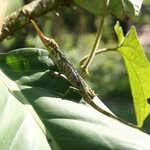
For more than 50 years, people said that the "Pinocchio Lizard" (horned anole lizard), called such for its long, protruding nose, was extinct, but that was just a fib by nature.
In 2005, it was found living at the tops of tall trees in the cloud forests of Ecuador. Like many species that are considered rare or endangered, it is instead the case that there are not many of them and never have been, and they are limited to a small area.
Why the nose? Only the males have long noses, and they appear to be used in social interactions, both among males and between males and females. Previous…